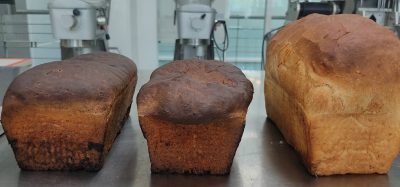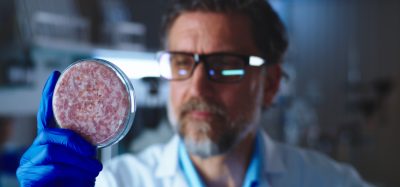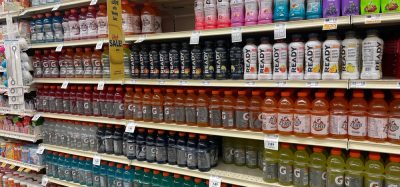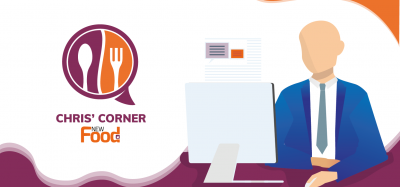Water reuse and recycling in the food industry
- Like
- Digg
- Del
- Tumblr
- VKontakte
- Buffer
- Love This
- Odnoklassniki
- Meneame
- Blogger
- Amazon
- Yahoo Mail
- Gmail
- AOL
- Newsvine
- HackerNews
- Evernote
- MySpace
- Mail.ru
- Viadeo
- Line
- Comments
- Yummly
- SMS
- Viber
- Telegram
- Subscribe
- Skype
- Facebook Messenger
- Kakao
- LiveJournal
- Yammer
- Edgar
- Fintel
- Mix
- Instapaper
- Copy Link
Posted: 11 January 2013 | Anke Fendler, Environmental & Innovative Technologies Specialist, Campden BRI | No comments yet
Water is an essential resource for food and drink production. With water scarcity worldwide a serious concern, there is a need for industry to address the impact of its water consumption and consider ways in which it can optimise water use in the future whilst ensuring the safety and wholesomeness of its products. This article discusses legal, quality and safety issues for reuse and recycling of water in the food industry and gives an overview of possible treatment technologies.
Water is scarce worldwide. Some recent examples include the severe drought of summer 2012 affecting 80 per cent of the United States as well as parts of Mexico and Central and Eastern Canada1, and the risk of a serious drought in the South East of England after an exceptionally dry winter, only averted by persistent heavy rainfall in recent months2. Water use has been growing at more than twice the rate of popula tion increase in the last century, and around 1.2 billion people, or almost one fifth of the world’s population, now live in areas of physical water scarcity3.
Water scarcity directly impacts on all areas of food production. Water is used throughout the food production process as an ingredient and in unit operations such as food cleaning, sanitising, peeling, cooking or cooling. Water is also used as a conveyor to transport food materials through the process. Finally, water is used to clean production equipment between operations.
Water is an essential resource for food and drink production. With water scarcity worldwide a serious concern, there is a need for industry to address the impact of its water consumption and consider ways in which it can optimise water use in the future whilst ensuring the safety and wholesomeness of its products. This article discusses legal, quality and safety issues for reuse and recycling of water in the food industry and gives an overview of possible treatment technologies. Water is scarce worldwide. Some recent examples include the severe drought of summer 2012 affecting 80 per cent of the United States as well as parts of Mexico and Central and Eastern Canada1, and the risk of a serious drought in the South East of England after an exceptionally dry winter, only averted by persistent heavy rainfall in recent months2. Water use has been growing at more than twice the rate of popula tion increase in the last century, and around 1.2 billion people, or almost one fifth of the world’s population, now live in areas of physical water scarcity3. Water scarcity directly impacts on all areas of food production. Water is used throughout the food production process as an ingredient and in unit operations such as food cleaning, sanitising, peeling, cooking or cooling. Water is also used as a conveyor to transport food materials through the process. Finally, water is used to clean production equipment between operations.
Water is an essential resource for food and drink production. With water scarcity worldwide a serious concern, there is a need for industry to address the impact of its water consumption and consider ways in which it can optimise water use in the future whilst ensuring the safety and wholesomeness of its products. This article discusses legal, quality and safety issues for reuse and recycling of water in the food industry and gives an overview of possible treatment technologies.
Water is scarce worldwide. Some recent examples include the severe drought of summer 2012 affecting 80 per cent of the United States as well as parts of Mexico and Central and Eastern Canada1, and the risk of a serious drought in the South East of England after an exceptionally dry winter, only averted by persistent heavy rainfall in recent months2. Water use has been growing at more than twice the rate of popula tion increase in the last century, and around 1.2 billion people, or almost one fifth of the world’s population, now live in areas of physical water scarcity3.
Water scarcity directly impacts on all areas of food production. Water is used throughout the food production process as an ingredient and in unit operations such as food cleaning, sanitising, peeling, cooking or cooling. Water is also used as a conveyor to transport food materials through the process. Finally, water is used to clean production equipment between operations.
Limitation on abstraction rights in many countries and ever increasing water prices and wastewater disposal costs are key drivers for research into technologies for recycling and reuse of food processing waters and their adoption by the food industry. Food manufacturers will reach a point where the implementation of existing or developing technologies for water recycling and reuse will be a commercial imperative.
There are three main strategies to reduce fresh water consumption and wastewater generation:
1. Water saving through development of unit operations that use less watern
2. Reducing uncontrolled water use during processing and cleaning (e.g. repairing leaks, reducing water pressure in some areas of the site, using spray nozzles for cleaning, etc.)
3. Recycling or reuse of water within the food processing plant, either directly or following reconditioning. An assessment of water usage and characteristics at the different process steps of a food plant helps with selecting potential sources of water for reuse.
In the past, the reuse of food processing water onsite has been limited to non-food contact and cleaning uses. Examples include cooling operations, general facility cleaning (e.g. use of relatively ‘clean’ water for initial floor scrub down), or use of nitrogen-rich waters as a fertiliser for irrigation of green spaces. Another common application in many countries is its use in agricultural irrigation.
Initial washing of vegetables, fluming of unprepared products and scalding water of meat and poultry are some currently accepted direct reuses. A significant reduction in overall water consumption may also be achieved by fitting equipment with water recirculation systems, for example for counter-current washing. Potentially, treated or reconditioned water could even be reused for the production of ice, hot water or steam, as boiler feed water, in the preparation of product or as a product ingredient.
Whatever the water reuse or recycling option chosen, it must be in line with legal requirements and be shown to satisfy quality and safety criteria. An appropriate hazard analysis and risk assessment should be carried out for each particular reuse application. Additionally, the reuse / recycling of recon – ditioned water requires continuous monitoring of the efficiency of the treatment in order to guarantee its optimal performance.
Legal requirements
Regulations established by public health authorities have long been considered a barrier to greater implementation of water reuse in the food industry. However, in recent years, regulators’ perceptions have started to change. The Committee on Food Hygiene of the Codex Alimentarius Commission has published draft guidelines on the hygienic reuse of processing water in food plants. These acknowledge that ‘while water should be reconditioned to a level safe and suitable for its intended use, reconditioning to the level of potable water is unnecessary in many cases’. However, regarding reuse water for incorporation into a food product, it insists on meeting at least the microbiological and, where necessary, chemical specifications for potable water4.
In Europe, the publication of Regulation (EC) 852/2004 on the hygiene of foodstuffs has made it possible to re-use water in the food processing environment, as long as “recycled water used in processing or as an ingredient (does not) present a risk of contamination. It is to be of the same standard as potable water, unless the competent authority is satisfied that the quality of the water cannot affect the wholesomeness of the product in its finished form.”5 This is a new insertion as compared to the last EU general hygiene Directive (EC/93/43), in which only the use of potable water was inferred6.
It is the competent national authorities’ task to evaluate all plans for water reuse at a food manufacturing operation to determine if the relevant legislation is being met, in order to protect the health of consumers. Convincing authorities that any plans for water reuse guarantee a product’s safety and suitability remains a challenging issue, involving sub – stantial research and documentation.
Quality considerations
Food process water may contain a complex mixture of constituents, and this must be taken into account for any recycling or reuse application. Generally, these waters are characterised by their high BOD concentrations, high levels of dissolved and/or suspended solids (including fats, oils, and grease), nutrients such as ammonia, and minerals (e.g. salts). The suitability of recovered water for use in any food operation is dictated by the quality of water required in that operation, the quality of the used water, the recovery and distribution method, and the ability to recondition the water to the level required. It is essential to know the basic requirements of the water quality in a specific process, which can be used without affecting the product in its finished form.
The principal physical, chemical and micro – biological water quality parameters will need to be monitored, preferably on-line, to ensure both quality and safety of all reuse waters. The frequency of monitoring and testing are dictated by the source of the water or its prior condition and the intended reuse of the water; more critical applications (e.g. as a product ingredient) will require more frequent monitor – ing than less critical uses (e.g. boiler feed water). Examples include parameters such as temperature and time, the measurement of the oxidation-reduction potential to ensure the correct dose of oxidising agents, or the use of particle counters when treating water by means of filtration.
Securing the microbiological quality of the water to be reused is of special importance for the food industry. Microbiological characterisation of the water at different steps of the production process is recommended to identify the microbial hazards associated with the specific operation and to plan for the implementation of appropriate monitoring mechanisms.
Safety – hazard analysis and risk assessment
Codex Alimentarius in its draft guidelines specifies the following requirements regarding the safety of reuse water: “Reuse water shall be safe for its intended use and shall not jeopardise the safety of the product through the introduction of chemical, microbiological or physical contaminants in amounts that represent a health risk to the consumer.”4 Thus, an assessment of the microbiological, chemical and physical hazards that can enter potable water following its first use in a food processing operation is necessary to determine the degree of reconditioning required for its reuse in a second food processing operation.
Campden BRI has published a risk assess ment protocol7 based on the principles of hazard analysis critical control point (HACCP) which can be used to assess the hazards and risks associated with water after its first use. Following a clearly documented HACCP approach to the evaluation of water reuse options within the food factory will help food manufacturers provide evidence and documentation to support the safe reuse of water to the Competent Authority and customers.
Treatment technologies for water reconditioning
One of the biggest challenges in supplying water of the necessary quality for reuse is the selection of an appropriate treatment system. Apart from removing undesirable physical, chemical and microbiological hazards, most systems will be designed to reduce pathogenic and spoilage organisms to acceptable levels, and to prevent their subsequent growth. Any water treatment system should be designed with knowledge of the types of contaminants the water may have acquired from its first use, and the chosen technologies should provide the level of reconditioning appropriate for the intended water reuse. This article can only give a short overview of available techniques, and more information can be found in specialised texts8-10.
Generally, water treatment technologies may be classed under the categories of pre – liminary treatment, primary treatment, secondary treatment and advanced and specific tertiary treatments. Preliminary treatment may consist of screening to remove gross suspended material through coarse filters, or settlement of large suspended material via gravity.
Primary treatments are often used to eliminate larger physical or chemical con – taminants, such as suspended solids or oils and grease. Centrifugation is useful for oil / water separation and for the separation of large particles (1 – 5000 μm). Gravity separation is based on density differences between water and the contaminants, where oil and grease would rise to the surface to be skimmed, while suspended solids with a particle size >30 μm would generally sink to the bottom (sedimentation). For smaller particles with a size of >3 μm, filtration through larger pore size filters or porous media, such as sand, may be used. Flotation is another primary treatment for suspended solids or oils and grease. Gas bubbles are passed through the wastewater, which adhere to water contaminants and cause them to rise to the surface into froth where they can be skimmed off.
Aerobic and anaerobic treatments are generally considered examples of secondary treatments. Both involve the use of biological reactors containing a high specific concen – tration of either suspended or attached growth microorganisms. As wastewater is passed through the system, the microorganisms remove a variety of organic compounds by metabolising these into carbon dioxide and/or methane.
So-called advanced and tertiary treatments target specific, often very small-sized, contami – nants. Ion exchangers remove target anions and/or cations via exchange with a resin. Evaporation is another technique suited for the removal of inorganic salts. However, foaming, scaling and fouling are typical operational difficulties of evaporation systems and may require ancillary treatment equipment.
In membrane filtration, the wastewater passes through a small pore size filter. The system is designed to capture dissolved solids or other contaminants as retentate. Techniques are classed by pore-size with microfiltration (MF) in the 0.02 – 10 μm range, capable of the removal of up to 99.99 per cent of bacteria and protozoa, and up to 90 per cent of viruses; ultrafiltration (UF) in the 20 – 200 nanometre range, intended to remove all bacteria; and nanofiltration (NF) in the 1 – 10 nanometre range, intended to remove all viruses and targeted organic compounds. Reverse osmosis may be seen as a special case of membrane filtration where an applied pressure will force particles through a semipermeable membrane to remove dissolved salts and minerals from solutions.
Ammonia may typically be removed from wastewaters by air stripping, and activated carbon is used to improve the organoleptic properties of the reuse water. pH correction and degasification may also be applied where necessary.
Disinfection
The elimination or sufficient reduction of pathogens is of utmost importance for water which is to be reintroduced into a food production process.
Chemical disinfection uses oxidising agents such as chlorine or ozone to reduce numbers of microorganisms. Ozonation works in a manner similar to chlorine disinfection, but avoids the concern of introducing chlorinated organic compounds to the wastewater stream. Water treated with chemical disinfectants remains protected against further contamination as long as a certain concentration of disinfectant remains. Heat treatment, membrane filtration (including RO) and ultraviolet light treatment are examples of physical disinfection methods. Ultraviolet disinfection can be used especially in low-concentration wastewater streams or high-concentration streams with high clarity.
The resistance of microorganisms to chemical disinfection, UV and heat treatment varies. Any disinfection process must be targeted to specific microorganisms and should be validated to confirm its efficiency in the removal of the target organism(s). A water treatment system that is sufficient and capable of consistently controlling the hazards identified is likely to consist of a combination of treatment technologies and will be specific for each case of potential water reuse.
Conclusion
Increasing water scarcity worldwide will make facing the challenges of implementing water reuse systems in the food industry unavoidable. There is great potential for water reuse in food manufacturing. Current legislation acknowledges the use of recycled / recon – ditioned water, when product safety is not compromised. Following a risk assessment protocol based on HACCP will help to ensure that microbiological, chemical and physical hazards are taken into account for the design of water reuse applications, and proper docu – mentation of the assessment will help in making a case to the competent authority. Specialist advice from industry experts and/or water treatment companies should be sought for all stages of the process of designing a water reuse and/or recycling system for a food processing plant.
References
1. http://droughtmonitor.unl.edu/
2. Environment Agency (June 2012) Water resources and drought prospects for summer/autumn and winter 2012/3 http://publications.environmentagency. gov.uk/PDF/GEHO0612BWNM-E-E.pdf
3. http://www.un.org/waterforlifedecade/ scarcity.shtml
4. Codex Alimentarius (Anon 2001) Proposed draft guidelines for the hygienic reuse of processing water in food plants. Joint FAO/WHO Food Standards Programme, Codex Committee on Food Hygiene, 34th session, Bangkok, Thailand 8-13 October 2001
5. Regulation (EC) 852/2004 on the hygiene of foodstuffs, Annex II, Chapter VII, 3. http://eurlex. europa.eu/LexUriServ/LexUriServ.do?uri=OJ:L:2 004:139:0001:0054:en:PDF
6. Council Directive 93/43/EEC of 14 June 1993 on the hygiene of foodstuffs http://ec.europa.eu/ food/food/biosafety/salmonella/mr06_en.pdf
7. Holah, J. (Ed.). Guidelines on the reuse of potable water for food processing operations. Guideline 70. Campden BRI, Chipping Campden, UK, 2012
8. Byers, W., et al., How to implement industrial water reuse: a systematic approach. Center for Waste Reduction Technologies, American Institute of Chemical Engineers, New York, NY, 1995
9. Safe and hygienic water treatment in food factories. European Hygienic Engineering Group, Guideline Document No. 28, www.ehedg.org
10. Klemes, J., Smith, R. and Kim, J-K. (Eds.). Handbook of water and energy management in food processing. Woodhead Publishing Limited, Cambridge, UK, 2008
About the author
Anke Fendler is an Environmental and Innovative Technologies Specialist at Campden BRI. She is responsible for managing activities in a wide range of areas related to environmental sustainability in the food industry (e.g. water and energy efficiency, waste reduction, carbon footprinting, etc.), be it in research projects or carrying out contract work, consultancy and training. Her current focus is on investigating and implementing water efficiency measures in the food chain, particularly related to water reuse within food processing operations.









